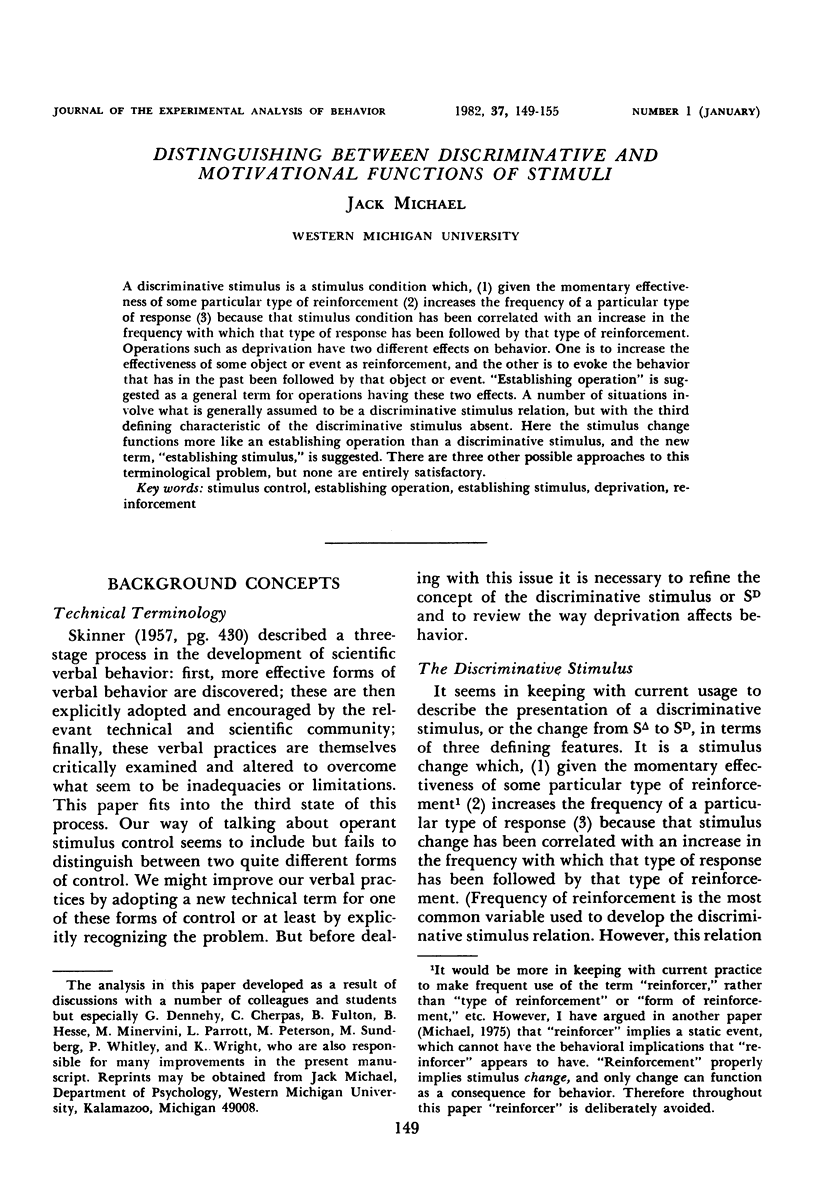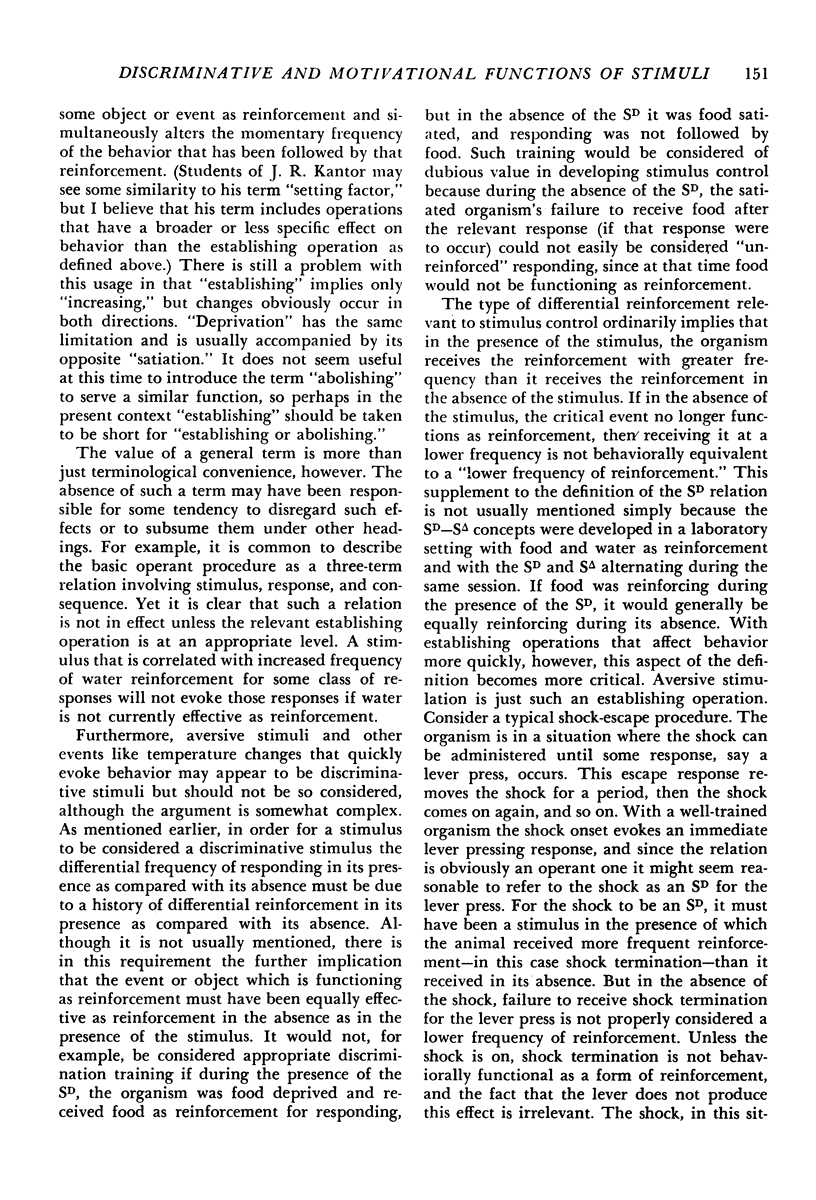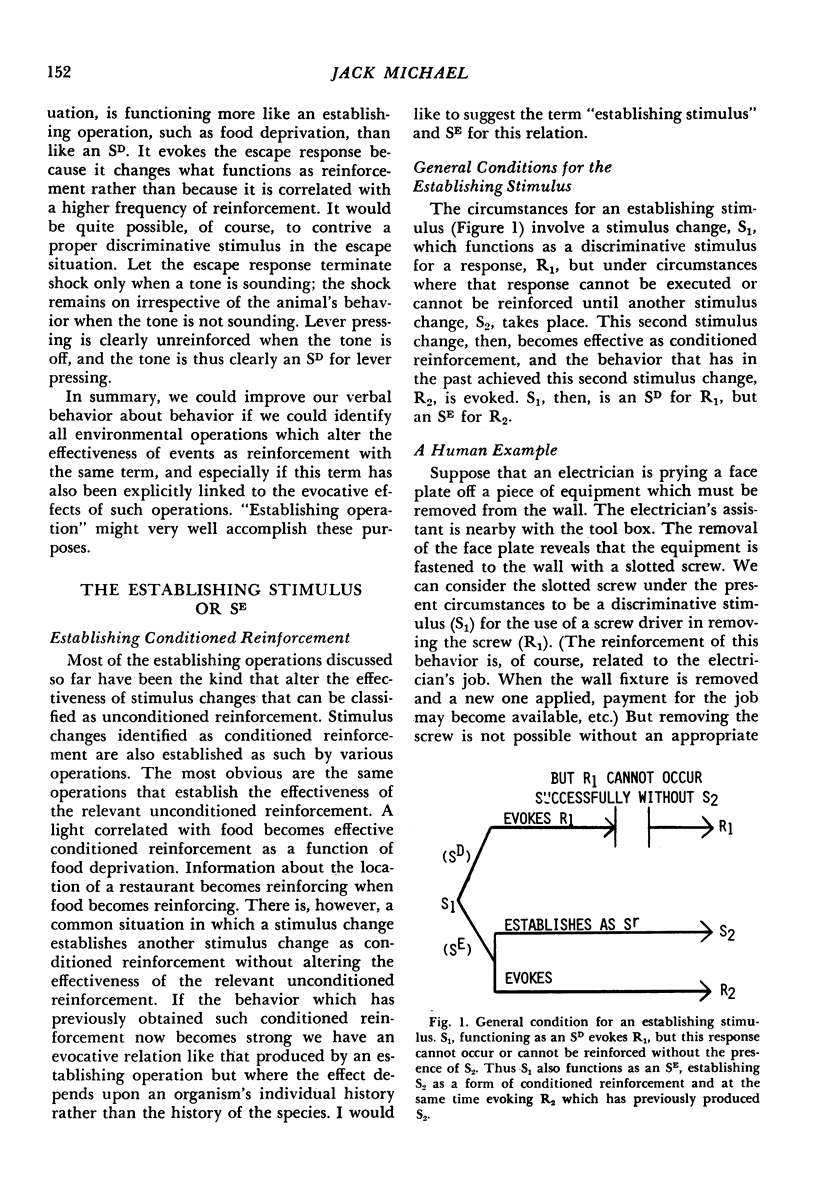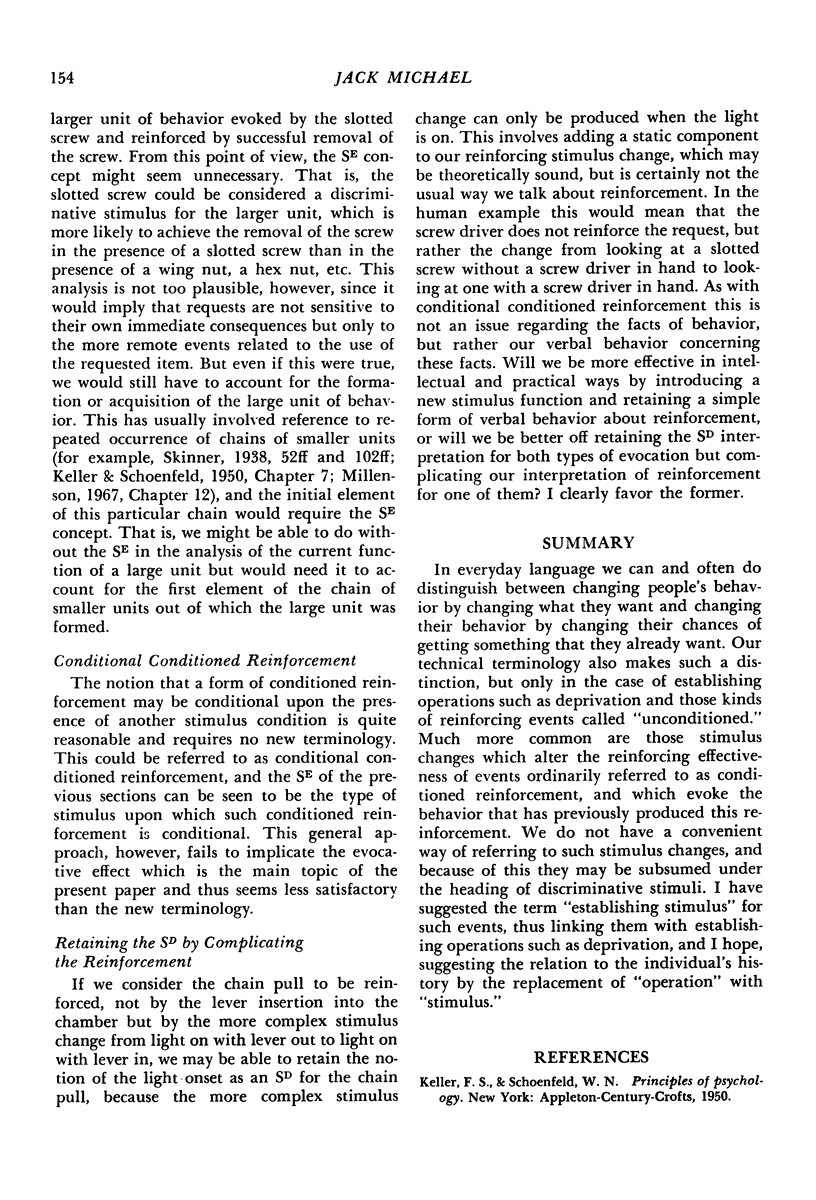Abstract
A discriminative stimulus is a stimulus condition which, (1) given the momentary effectiveness of some particular type of reinforcement (2) increases the frequency of a particular type of response (3) because that stimulus condition has been correlated with an increase in the frequency with which that type of response has been followed by that type of reinforcement. Operations such as deprivation have two different effects on behavior. One is to increase the effectiveness of some object or event as reinforcement, and the other is to evoke the behavior that has in the past been followed by that object or event. "Establishing operation" is suggested as a general term for operations having these two effects. A number of situations involve what is generally assumed to be a discriminative stimulus relation, but with the third defining characteristic of the discriminative stimulus absent. Here the stimulus change functions more like an establishing operation than a discriminative stimulus, and the new term, "establishing stimulus," is suggested. There are three other possible approaches to this terminological problem, but none are entirely satisfactory.
Full text
PDF






Selected References
These references are in PubMed. This may not be the complete list of references from this article.
- KELLER F. S. Animals and children. Child Dev. 1950 Mar;21(1):7–12. [PubMed] [Google Scholar]


